#pierre magnier
Explore tagged Tumblr posts
Text

#movies#polls#la roue#la roue 1923#la roue movie#20s movies#abel gance#séverin mars#ivy close#gabriel de gravone#pierre magnier#max maxudian#have you seen this movie poll
30 notes
·
View notes
Text

Sarah Bernhardt and Pierre Magnier
French vintage postcard
#pierre#briefkaart#vintage#postcard#postkaart#sepia#magnier#carte postale#postal#pierre magnier#french#photo#bernhardt#sarah bernhardt#ansichtskarte#ephemera#historic#photography#tarjeta#postkarte#sarah
20 notes
·
View notes
Text

Pierre Magnier-Ivy Close "La rueda" (La roue) 1923, de Abel Gance.
10 notes
·
View notes
Text
THE RULES OF THE GAME (1939):
A bourgeois party
Couples cheat on each other
Keep up social norms
youtube
#the rules of the game#La regle du jeu#random richards#poem#haiku#poetry#haiku poem#poets on tumblr#haiku poetry#haiku form#poetic#criterion collection#criterion channel#jean renoir#marcel dalio#Nora Gregor#paulette dubost#Mila Parely#Odette Talazac#Carl Koch#beaumarchais#julien Carette#Roland totain#Gaston modot#Pierre Magnier#Youtube
0 notes
Text
Cyrano age gap casting crimes
Following up this post
Look at the absolute STATE of Cyrano casting, by increasing order of age gap. & this is just for the famous/big productions & films! & only ones I've seen myself!!
(1st number is actor's age during production release, 2nd number is age gap w Roxane's actress)
James McAvoy, 40 (10 years older than Roxane) < the fact that we START at 10 is a bad sign... Michel Vuillermoz, 55 (11 years older than Roxane) Kenneth Branagh, 48 (15 years older than Roxane) Benoit Solès, 43 (17 years older than Roxane) Gérard Depardieu, 42 (18 years older than Roxane) José Ferrer, 38 (19 years older than Roxane) < meaning that he was literally TWICE ROXANE'S AGE in this film Peter Dinklage, 52 (19 years older than Roxane) Kevin Kline, 61 (25 years older than Roxane) Pierre Magnier, 56 (27 years older than Roxane)
Like... be so fucking for real right now... These two grew up together! As childhood friends! I would accept an age gap of up to 5 years & would DIE for a show where they're both cast at the same age
But wait — what's this? One more name left in the hat, you say?
Jacques Weber, 34 (1 year younger than Roxane!!!)
It is, of course, as always, Jacques Weber from 1983 to the rescue! With the only believable Cyrano/Roxane age gap on this list! 🥳💕
Now someone cast a bunch of 22-year-olds so we can see a historically accurate version...
7 notes
·
View notes
Photo

Jean Renoir, Roland Toutain, and Nora Gregor in The Rules of the Game (Jean Renoir, 1939)
Cast: Nora Gregor, Paulette Dubost, Mila Parély, Odette Talazac, Claire Gérard, Anne Mayen, Lise Elina, Marcel Dalio, Julien Carette, Roland Toutain, Gaston Modot, Jean Renoir, Pierre Magnier. Screenplay: Jean Renoir, Carl Koch. Cinematography: Jean Bachelet. Production design: Max Douy, Eugène Lourié. Film editing: Marthe Huguet, Marguerite Renoir.
The first time I saw The Rules of the Game, many years ago, I didn't get it. I knew it was often spoken of as one of the great films, but I couldn't see why. I had been raised on Hollywood movies, which fell neatly into their assigned slots: love story, adventure, screwball comedy, satire, social commentary, and so on. Jean Renoir's film was all of those things at once, to my confusion. I had to be weaned from narrative formulas to realize why this sometimes madcap, sometimes brutal tragicomedy is regarded so highly. And I had to learn why the period it depicts, the brink of World War II, isn't just a point in the rapidly receding past, but the emblematic representation of a precipice that the human world always seems poised upon, whether the chief threat to civilization is fascism, pandemic, or global climate change. The Rules of the Game is about us, dancing merrily on the brink, trying to ignore our mutual cruelty and to deny our blindness. Renoir's characters are blinded by lust and privilege, and they amuse us until they do horrible things like wantonly slaughter small animals or play foolish games whose rules they take too lightly. I'm afraid that makes one of the most entertaining (if disturbing) films ever made seem like no fun at all, but it should really be taken as a warning never to ignore the subtext of any work of art. Much of the film was improvised from a story Renoir provided, to the glory of such performers as Marcel Dalio as the marquis, Nora Gregor as his wife, Paulette Dubost as Lisette, Roland Toutain as André, Gaston Modot as Schumacher, Julien Carette as Marceau, and especially Renoir himself as Octave. Renoir's camera prowls relentlessly, restlessly through the giddy action and the sumptuousness of the sets by Max Douy and Eugène Lourié. It's not surprising that one of Renoir's assistants was the legendary photographer Henri Cartier-Bresson. And, given my own initial reaction to the film, it's also not surprising that The Rules of the Game was a critical and commercial flop, trimmed to a nubbin of its original length, banned by the Vichy government, and after its negative was destroyed by Allied bombs in 1942, potentially lost forever. Fortunately, prints survived, and by 1959 Renoir's admirers had reassembled it for a more appreciative posterity.
6 notes
·
View notes
Text


CALIFICACIÓN PERSONAL: 5 / 10
Título Original: Astérix aux jeux olympiques
Año: 2008
Duración: 116 min
País: Francia
Dirección: Thomas Langmann, Frédéric Forestier
Guion: Alexandre Charlot, Olivier Dazat, Thomas Langmann, Franck Magnier. Cómic: René Goscinny, Albert Uderzo
Música: Frédéric Talgorn
Fotografía: Thierry Arbogast
Reparto: Gérard Depardieu, Clovis Cornillac, Alain Delon, Elric Thomas, Jean-Pierre Cassel, Santiago Segura, Benoît Poelvoorde, Vanessa Hessler, José García, Zinedine Zidane
Productora: Coproducción Francia-Alemania-España-Italia-Bélgica; Pathé Renn Productions, La Petite Reine, TF1 Films Production, TriPictures, Sorolla Films, Constantin Film, uFilms, Novo RPI, Canal+, Canal+ España
Género: Adventure; Comedy; Family
TRAILER:
dailymotion
0 notes
Photo


La roue (Abel Gance, 1922)
#la roue#abel gance#ivy close#pierre magnier#gif#silent#silent cinema#silent film#silent movies#1922#french cinema#french film#french movie
68 notes
·
View notes
Photo










La roue (Abel Gance, 1923).
#la roue#la roue (1923)#abel gance#gabriel de gravone#pierre magnier#séverin-mars#ivy close#gastor brun#marc bujard#léonce-henri burel#maurice duverger#marguerite beaugé#robert boudrioz#blaise cendrars
179 notes
·
View notes
Photo




La roue (Abel Gance, 1922)
#la roue#abel gance#gabriel de gravone#pierre magnier#1922#silent film#silent movies#silent cinema#silent#french cinema#french film#french movie
9 notes
·
View notes
Photo

Es gäbe, wird Jean Cocteau im Klappentext zitiert, ein Kino vor und nach Abel Gances La roue, wie es Malerei vor und nach Picasso gäbe. Nun hat sich doch einiges aus der Malerei vor Picasso besser gehalten, als die meisten Filme vor 1923, daß wir La roue in dieser Analogie heute ungefähr auf dem Stande steinzeilicher Höhlenmalerei einsortieren würden. Höhlenmalerei mit Eisenbahnen ist allerdings wieder interessant. Gleich als erstes gibt es ein spektakuläres Zugunglück und unser vom Schicksal gebeutelter Lokführer Sisif stielt ein verwaistes Mädchen als Schwesterchen für seinen mutterlosen Sohn. Sie wächst zu einer schönen Frau heran und das Leben im beschaulichen Gleisdreick mit lustiger Hausziege wird nicht einfacher, denn der Lokführer, den sie für ihren Vater hält, sein romantischer geigenbauender Sohn, der sie für seine Schwester hält und der ausbeuterische Kapitalist, dem Sisif dummerweise einmal erzählt hat, daß er sie gestohlen hat, verfallen ihr alle rettungslos. Eifersucht, Erpressung, Wahnsinn, Trunksucht, Unglück, Heiligenbildchen, Weichenstörungen, Zeter und Mordrio, innovative Montagetechnik und Selbmordversuche per Zugentgleisung sind die Folge. Zur Strafe wird er auf eine langweilige Ausflugsbahn ohne Weichen am Montblanc versetzt, ob der schönen Aussicht erblindet er und sein Sohn fällt in einen Gletscher, aus dem er erst 27 Jahre später geborgen werden kann. Es ist alles ein bisschen viel. Wir gehen mal davon aus, das Cocteau eher die filmische Erzählweise als die Handlung meinte.
0 notes
Text
Pas l'temps je lis (novembre-décembre 2022)
Pas l’temps je lis est la chronique que je tiens dans le supplément culture qui paraît chaque samedi dans le quotidien Le Temps. Ci-dessous vous trouverez la liste des livres présentés dans les chroniques. Elle permettra aux abonné.es du Temps de les retouver facilement, offrira des pistes aux lecteur.ices du blog et sera utile aux éditeurs.trices qui verront ainsi quels livres ont été retenus et auront une idée du ton de la chronique.
Retrouvez la chronique sur le site du Temps
23 décembre 2022
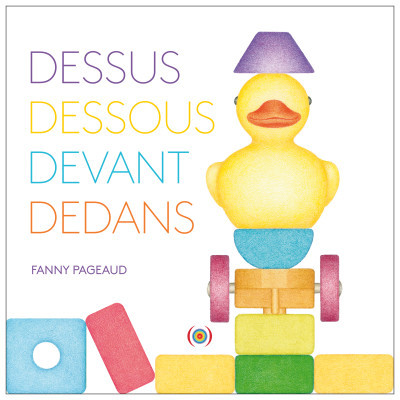
Dessus, dessous, devant, dedans, Fanny Pageaud, Les Grandes Personnes, 2022
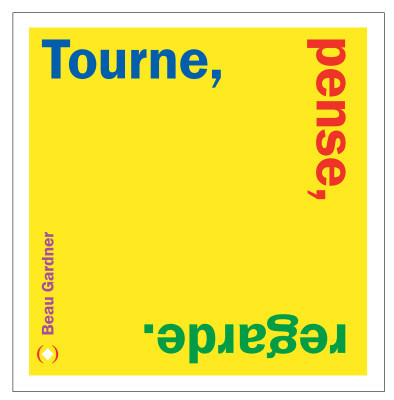
Tourne, pense, regarde, Beau Gardner, Les Grandes Personnes, 2022
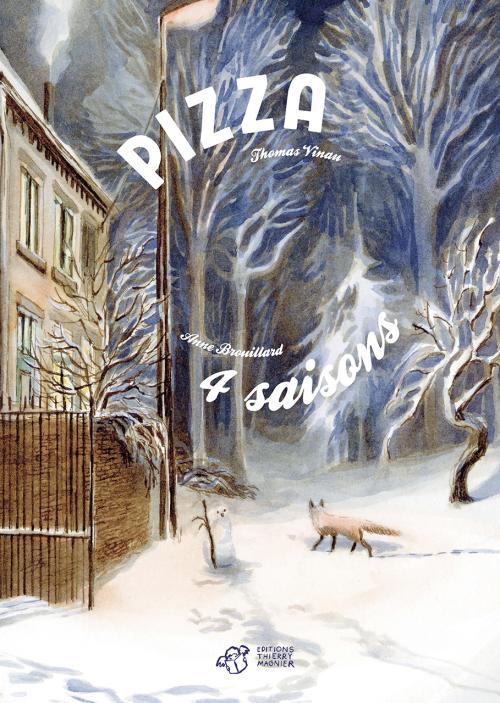
Pizza 4 saisons, Thomas Vinau, Anne Brouillard, Ed. Thierry Magnier, 2022
17 décembre 2022
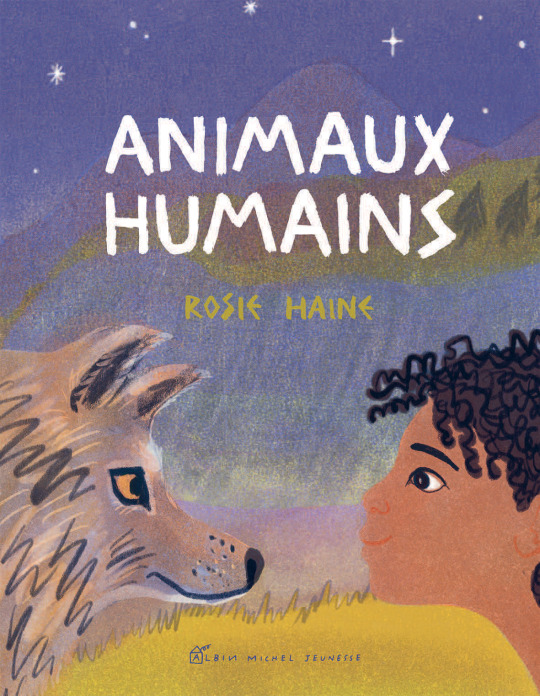
Animaux humains, Rosie Haine, Albin Michel Jeunesse, 2022
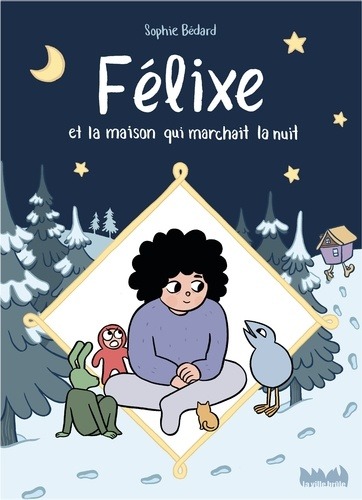
Félixe et la maison qui marchait la nuit, Sophie Bédard, La Ville brûle, 2022
10 décembre 2022

Photo de famille, Chloé Millet, Delphine Jacquot, Les Fourmis rouges, 2022
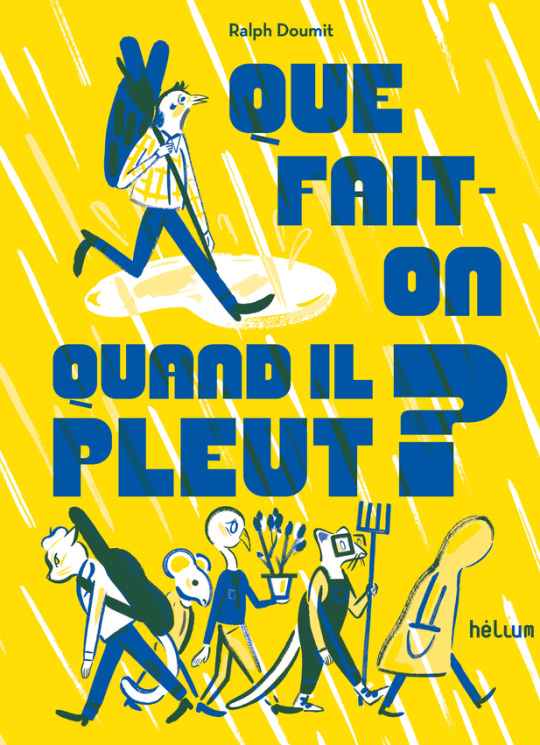
Que fait-on quand il pleut?, Ralph Doumit, Julia Wauters, Hélium, 2022
3 décembre 2022
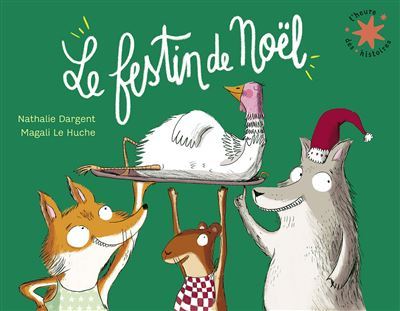
Le Festin de Noël, Nathalie Dargent, Magali Le Huche, Gallimard Jeunesse, 2022 (L'heure des histoires)
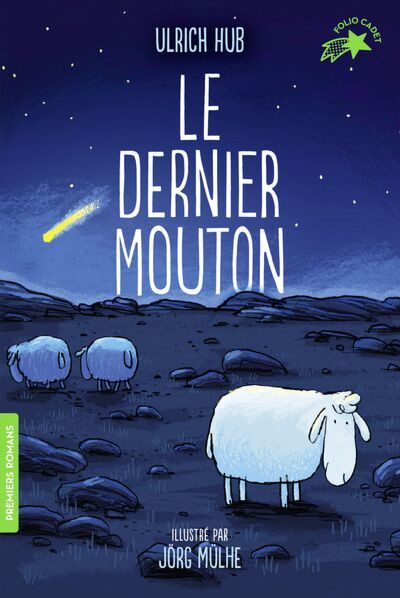
Le dernier mouton, Ulrich Hub, Jörg Mülhe, Gallimard Jeunesse, 2022 (Premiers romans)
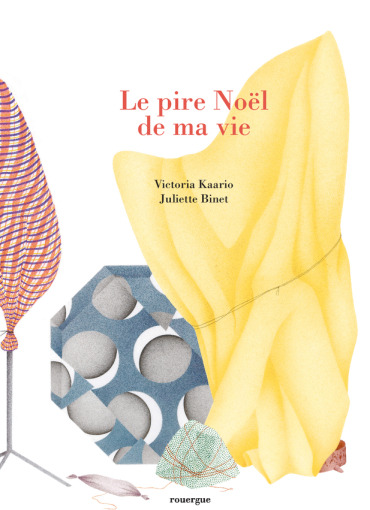
Le pire Noël de ma vie, Victoria Kaario, Juliette Binet, Rouergue, 2022
26 novembre 2022
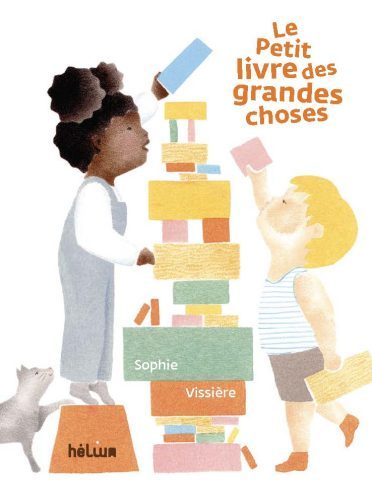
Le petit livre des grandes choses, Sophie Vissière, Hélium, 2022
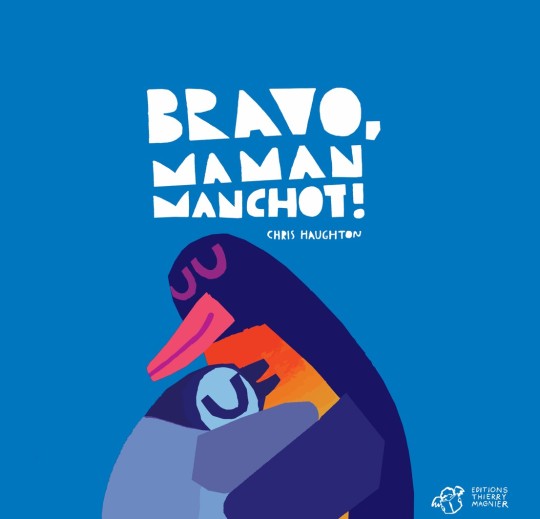
Bravo, maman manchot!, Chris Haughton, Thierry Magnier, 2022
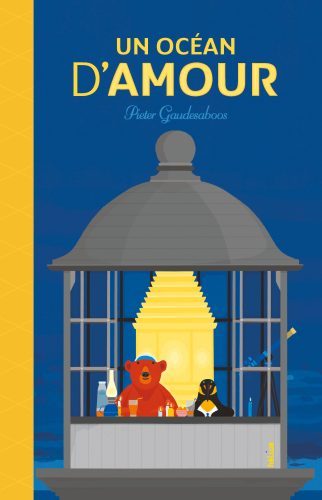
Un Océan d'amour, Pieter Gaudesaboos, Hélium, 2022
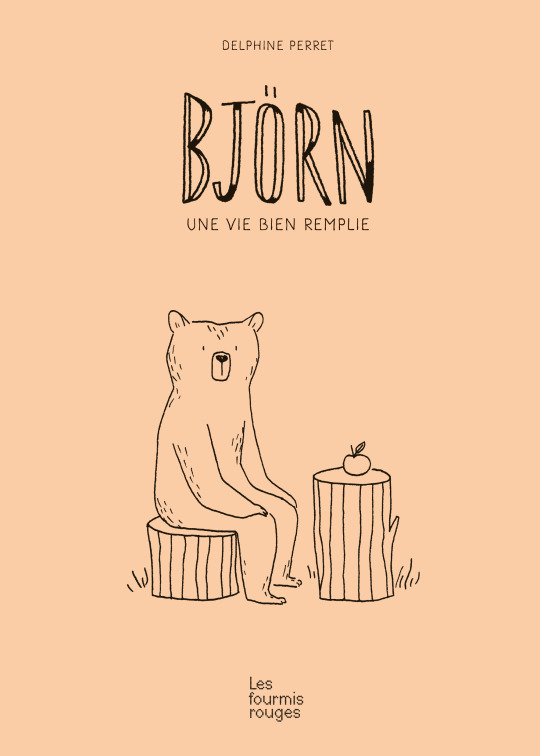
Björn: une vie bien remplie, Delphine Perret, Les Fourmis rouges, 2022
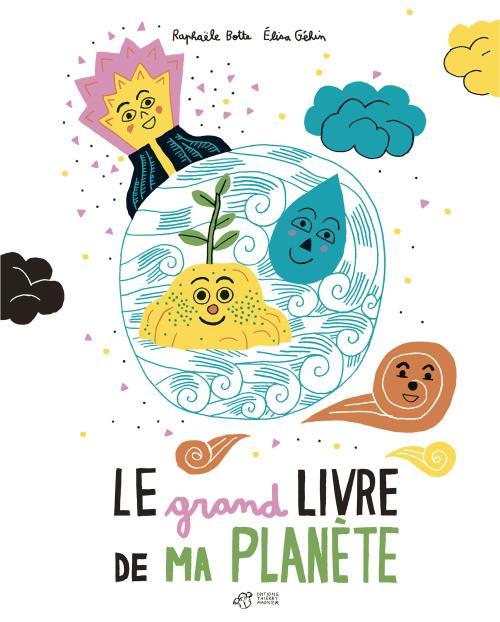
Le grand livre de ma planète, Raphaële Botte, Elisa Géhin, Thierry Magnier, 2022
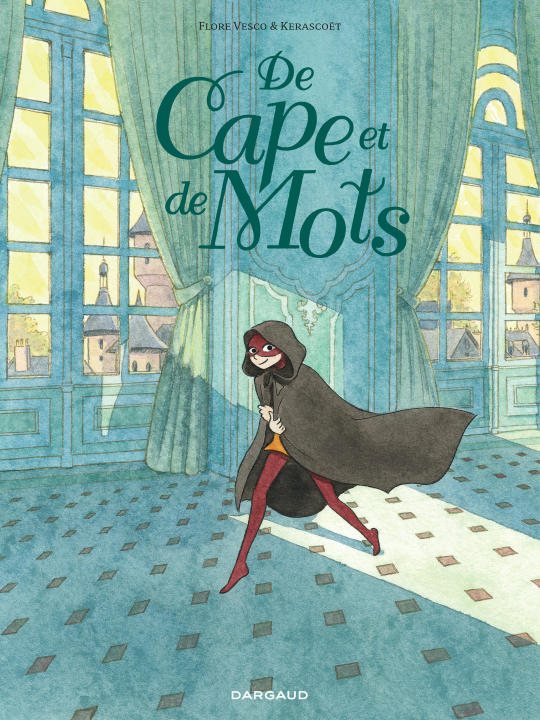
De Cape et de mots, Flore Vesco, Kerascoët, Dargaud, 2022
19 novembre 2022
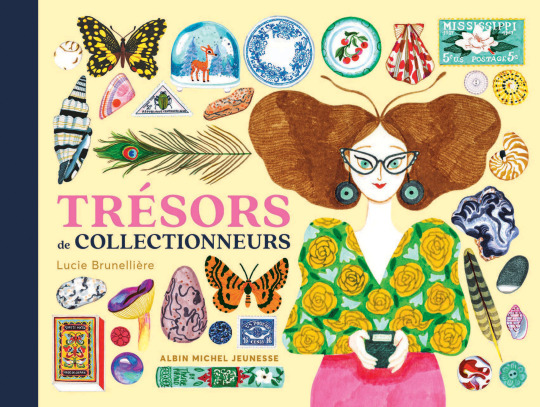
Trésors de collectionneurs, Lucie Brunellière, Albin Michel jeunesse, 2022
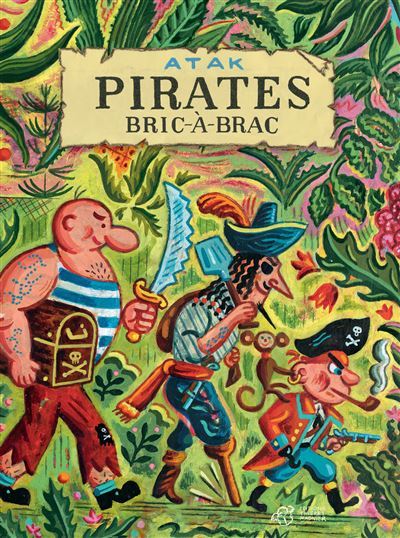
Pirates Bric-à-brac, ATAK, Thierry Magnier, 2022
12 novembre 2022
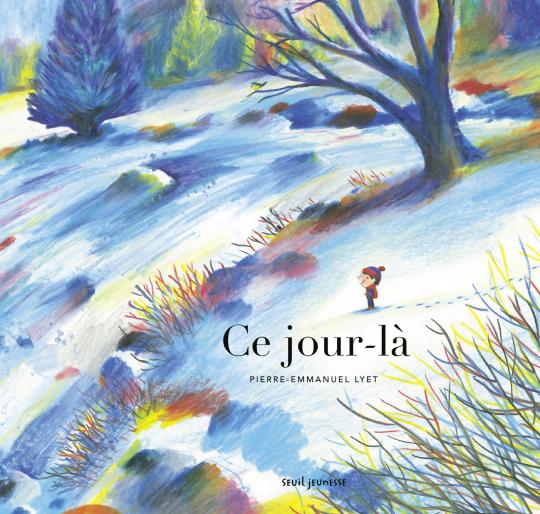
Ce Jour-là, Pierre-Emmanuel Lyet, Seuil jeunesse, 2022
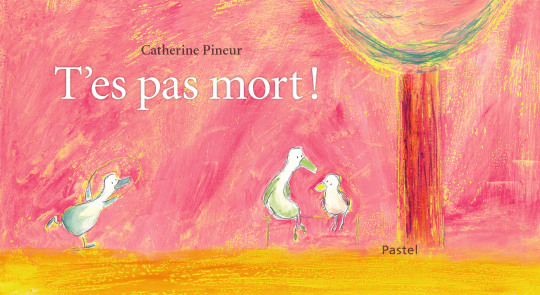
T'es pas mort!, Catherine Pineur, Ecole des loisirs, 2022 (Pastel)

Où vont les doudous quand ils meurent?, Laurence Salaün, Gilles Rapaport, Seuil jeunesse, 2022
5 novembre 2022
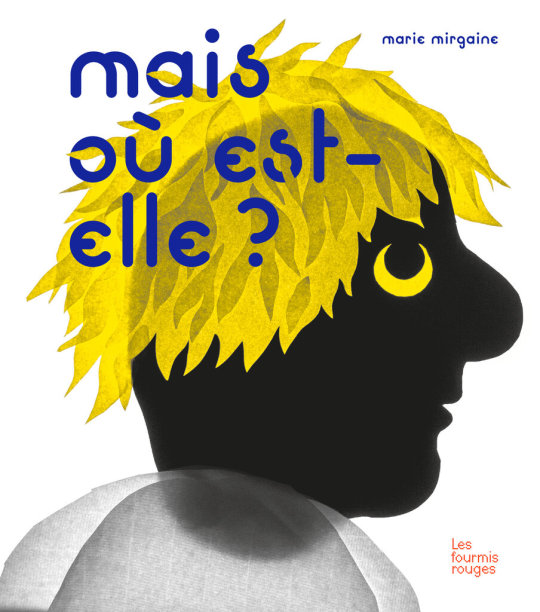
Mais où est-elle?, Marie Mirgaine, Les Fourmis rouges, 2022
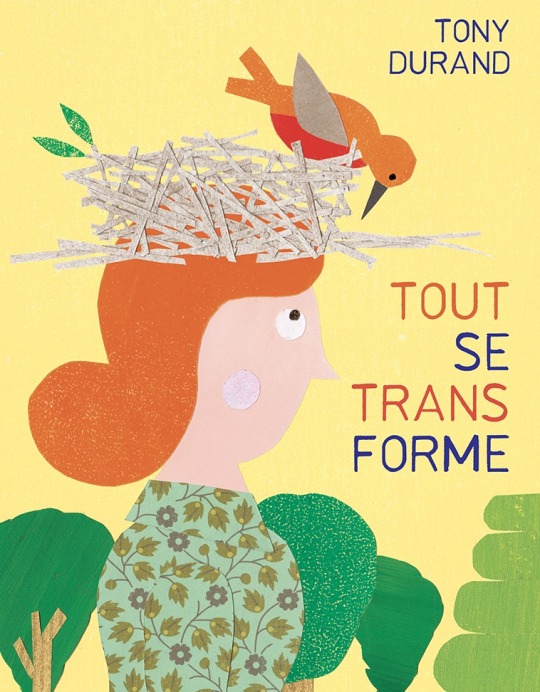
Tout se transforme, Tony Durand, Motus, 2022
#Fanny Pageaud#Beau Gardner#Thomas Vinau#Anne Brouillard#Les Grandes Personnes#Thierry Magnier#Rosie Haine#Albin Michel Jeunesse#Chloé Millet#Delphine Jacquot#Les Fourmis rouges#Ralph Doumit#Julia Wauters#Hélium#Magali Le Huche#Nathalie Dargent#Gallimard jeunesse#noël#Ulrich Hub#Jörg Mülhe#Victoria Kaario#Juliette Binet#Rouergue#Sophie Vissière#La Ville brûle#Sophie Bédard#Chris Haughton#Dargaud#Flore Vesco#Kerascoet
0 notes
Text
La Roue (French Impressionism)
by Irra Bulalacao
La Roue (The Wheel) is a french silent film directed by Abel Gance. The key actors of this film are Severin Mars as Sisif, Ivy Close as Norma, Elie Gravone as Elie, the son of Sisif and Pierre Magnier as Mr. de Hersan. This film was released in 1923. The film is about a father (Sisif) who happened to fall in love with his adopted daughter, Norma. With that, Sisif is having some delusions maybe because he couldn’t accept the fact that he has fallen in love with his daughter. He also kept this secret to his son Elie because he is afraid that Elie and Norma would be angry at him if they find out the truth. Later, when Sisif could no longer handle his thoughts about Norma, he confessed to Mr. Hersan. Mr. Hersan also likes Norma so he used that confession as a blackmail against Sisif so that he could marry Norma.
Mr. Hersan’s ulterior motive of blackmailing Sisif worked out. Norma agreed on marrying Mr. Hersan since she felt that she’s a burden for his father. After they got married, Norma wrote a letter for her brother and father but then they didn’t respond in any of those letters that she sent. Norma is unhappy with Hersan and she only wants to be with her family again. I also felt terrible when Elie has feelings for her too. The moment Elie found out that Norma was not really his sister, he got angry with his father maybe because he felt that Norma needs to know the truth and also, he felt like he didn’t need to feel guilty at all for having feelings for her since they are not biologically related. The ending was too sad because Elie and Hersan fought each other because of Norma which resulted to the death of both. While Sisif lost his sight because of some accident while he is in the train. And since Sisif only has Norma in his life, although he got angry at her because of what she has caused to her brother and to her husband but still he managed to accept Norma again in his life. It is also a good thing that these circumstances that have happened to them made them realize the importance of their connection as a family and Sisif already manage to disregard his feelings towards to his adopted daughter, Norma.
To be honest, along the half of the film, I felt uneasy with the story since I’m really not into this kind of story. A father who fell in love with his daughter is something I don’t like to watch especially if I had the knowledge about its plot before watching it. At first, I thought it was just about a father who will help this child to have a life like a normal child with the love of parents, siblings, giving shelter etc. But I am surprised when there are small hints that Sisif likes his adopted daughter. The film is good especially on how the intertitles are effective in giving information about what is going in the scene. Among all the silent films that I’ve already watched, this film is the easiest to understand and it’s not boring as well. I got hooked with the sequence of the scenes since I was fooled by the first scenes because I thought it was just about a father who adopted a child and later on, takes care of her and treats her as a family. But this film is way more than just that.
The direction for me is really good since as a viewer, I was able to understand it by just watching each of the scenes. Also, with the help of intertitles, it made easier to understand fully each of the happenings in the scene. And the director was able to fool me about what the story is all about since for the first 40 minutes of the film, it is just about Sisif and his loving children, later, he just got irritated about anything. He started to drink alcohol all the time, always irritated and got involved in gambling as well. Which made me curious about his reasons of why he is acting like that. It has a slow pace when it comes to storytelling. The rising action was presented after first hour of the film. But then, it didn’t affect my understanding as a viewer of what the film is all about.
When it comes to its casts, they were all able to portray the characters. I also like on how Severin Mars (Sisif) portrayed the father figure especially on the latter part of the film wherein he tried to disregard his feelings towards Norma for so many times because there is still the feeling of being a father towards her that’s been changing his mind all the time whenever his thoughts of falling in love with her comes in. Although I felt uneasy about his character because he fell in love with his daughter but then, on how he manages to disregard those feelings were able to change my perspective to his character. I think also that it’s a good thing that there are only few casts in this film because it made it easier to understand especially because it is a silent film and it is very hard to know each of the characters because you can’t hear them talk or say anything.
The musical scoring did not affect my experience in watching this film. It’s not too loud and it’s not too quiet as well. Everything is in control especially in some of the scenes wherein there is a dominating mood like despair, anger etc. The musical scoring did not overpower the scenes. And that’s what I like about this film because it didn’t make me to focus on the music so much but rather on what’s happening in each of the scenes.
When it comes to its cinematography, French has their own way of using camera angles in visual storytelling. It’s very evident all throughout the film. I do not know what to call it but they are using the circle type of a frame, with this, the circle is just focusing on a particular person. To my observation, they are just only using this especially if the character is showing extreme emotions because in the film, they shift into normal framing to circle framing. And most of the time, the circle framing is used to the character which shows an extreme emotion. I am not sure if it’s the same with some shots in Mr. Bean. But every time I see this type of framing in the film, it gives me a nostalgic feeling of some episodes in Mr. Bean. They are really breaking the rules of Hollywood because there is this scene wherein there’s a cloth or something that is covering the camera and then it slowly moves away from the lens to show the scene. You could really see that it not in the editing but the cameraman or the director meant that transition or camera shot to be like that. There are also scenes especially in the first part wherein Sisif is looking at the camera as if he is showing the viewers his reactions. But even though it was against to what is usual to us, it did not affect my experience in watching this film.
In conclusion, every element of a film really worked out in La Roue. To be honest, I found it very easy to understand. The mise-en-scene of this film made me in touch with story. Although when it comes to cinematography, they are breaking the rules of the Hollywood, but then it didn’t make me feel that this film is not worthy to watch just because it’s not the usual visual storytelling that I used to. It made me realize that there is something more outside the Hollywood setup is offering. You just need to explore and be open with new presented ideas about filmmaking and how it works.
0 notes
Video
vimeo
LOVING from Thibaut Buccellato on Vimeo.
Loving
An ode to love.
thibautbuccellato.fr - instagram.com/thibuch
Written, Directed & Produced by Thibaut Buccellato Cinematography by Erik Henriksson
Starring : Kolia Abiteboul, Harper Andria, Zac Andria, Ophélie Bau, Fehdi Bendjima, Lola Bessis, Anouchka Bettendorf, Fred Boa, Esteban Boavida, Clémence Boisnard, Mazigh Bouaich, Camélia Bourbon, Andréa Boutin, Lucas Bravo, David Chausse, Maria Clara Daros, Jade Cve, Inès D’assomption, Pierre Deladonchamps, Jérémie Dethelot, Cyril Durel, Christine Gautier, Guang Huo, Emma Jaubert, Maud Le Fort, Déborah Lukumuena, Lou Luttiau, Honorine Magnier, Maeva Marshall, Luis Mesquita, Saber Nacer, Nicolas Neuhoff, Georgia Polkinghorne, Agathe Rousselle, Claire Tran, Kevin Vasic, Pauline Vernet, Alexandre Wetter, Michele Wielgo Polanin, Bernard Wielgo Polanin, Fabian Wolfrom
Music : Je te laisserai des mots Written, composed and performed by Patrick Watson Courtesy of Secret City Records Inc.
Editor : Zoé Sassier Colorist : Sofie Friis Borup Sound mixer : Alexandre Poirier Production manager : Ulysse Ancele 1st Assistant director : Gabrielle Giraud 2nd Assistant director : Kelly Reynol 1st Assistant camera : Raphael Aprikian 2nd Assistant camera : Matthieu Abily Gaffer : Félicien Forest Best boy electrician : Alexandre Denis Set designer : Julie Jarrige Costume Supervisor : Alexandra Nicolaïdis Runner : Bastian Barraja Shot on : Kodak Film 35mm Developping by : Focus Film Camera provided by : RVZ Special thanks : Patrick Watson • Paul Rocha (Secret City Records) • Hugo Diaz (Henry) • Wladimir Baseden (Lux Artists Ltd.) • Samuel Renollet (RVZ) • Nina Boriri (Focus Film) • Alexandra Lubrano (Company 3) • Erik Henriksson • Sofie Borup • Brigitte Zaccaria • Bruno Camhaji • Charlotte Ravinet • Anais Brieuc • Pierre Bousquet • Eugenie Marcland • Louise Carrasco • Kiefer Wiessler • Nathalie Catanzano • Yohann Bitton • Ulysse Ancele • Sebastien Gros • Alexandre Poirier • Baptiste Marteau • Maxwell Hadson
© Thibaut Buccellato - 2021
1 note
·
View note
Text

Ivy Close and Séverin-Mars in La Roue (Abel Gance, 1923)
Cast: Séverin-Mars, Ivy Close, Gabriel de Gravone, Pierre Magnier, Georges Térof, Gil Clary, Max Maxudian. Screenplay: Abel Gance. Cinematography: Gaston Brun, Mac Bujard, Léonce-Henri Burel, Maurice Duverger. Art direction: Robert Boudrioz. Film editing: Marguerite Beaujé, Abel Gance. Music: Arthur Honegger.
The plot is operatic, the technique is novelistic, and the aim is tragic. Abel Gance's La Roue (aka The Wheel) never satisfies on any of those counts, but it's not without a lot of effort on his part as well as his actors and technicians. At its premiere, it ran for somewhere between seven-and-a-half and nine hours (depending on which source you trust), spread over three days, and was a success, earning praise from Jean Cocteau among others. Gance then produced a cut that ran for two and a half hours, which was the version most people saw for many years until film historians set about to reproduce the original. That restoration is the one I sat through for sevenish hours spread over four nights on the Criterion Channel. I have seen seven-hour movies (and some that seemed like it) before, most notably Bela Tarr's Sátántangó (1994). The urge I usually have afterward is to try to justify the expenditure of time, typically by categorizing it as an "immersive experience." That approach works with films like Tarr's, which has a grounded reality to it that provides a look into a human existence other than my own, which is the aim of all narrative art. It's less easily justified when the film is as preposterous as Gance's is in many ways. I said it was operatic in its plotting, and here it's useful to think of the melodramatic excesses of works like Verdi's Il Trovatore, based on a florid Spanish play that involves foundlings, mistaken identities, and people torn between passion and duty. La Roue has a foundling, survivor of a train wreck, rescued by a railroad engineer who raises her along with his own son, allowing both of them to believe they are siblings, which works until she blossoms into a young woman and first the father and then the son realize they're in love with her. The treatment of this story evokes, as others have noted, the novels of Victor Hugo and Émile Zola, but it also reminds me of Thomas Hardy's works, in which fate (which Hardy calls "hap," or the blind workings of chance) forestalls any efforts by the protagonists to chart their own course. And since the story involves a kind of incestuous passion, the legend of Oedipus comes to mind, and sure enough Gance quotes Sophocles in one of the intertitles. But of course it's a movie, and that necessitates a good deal of spectacle, starting with the train wreck that sets the plot in motion. La Roue is never dull, and it's sometimes emotionally affecting, but it's not an opera (although Arthur Honegger's score suggests its potential in that regard) and it's not a novel or a tragedy. It's a movie, and one with a great deal to watch if you're willing to commit seven hours to it, but I think you have to be devoted to learning about the craft of movie-making to profit much from it.
1 note
·
View note
Text
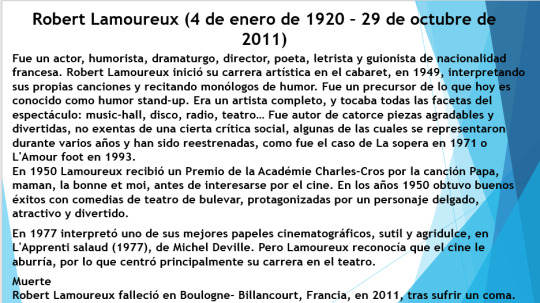
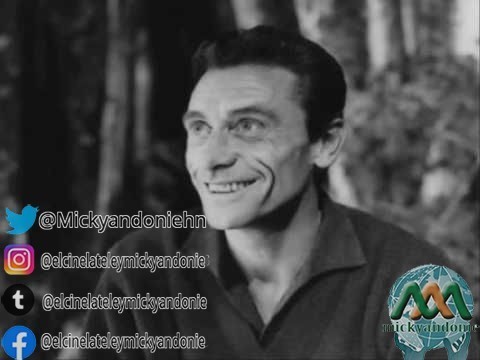
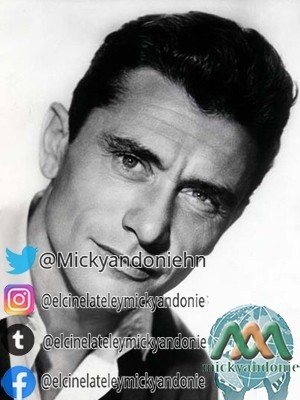
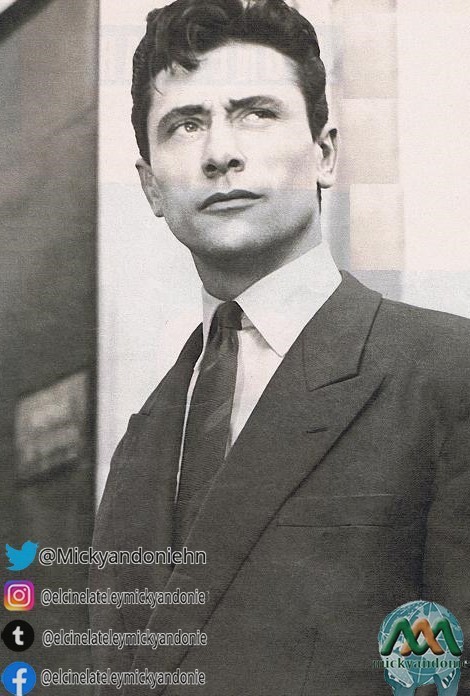
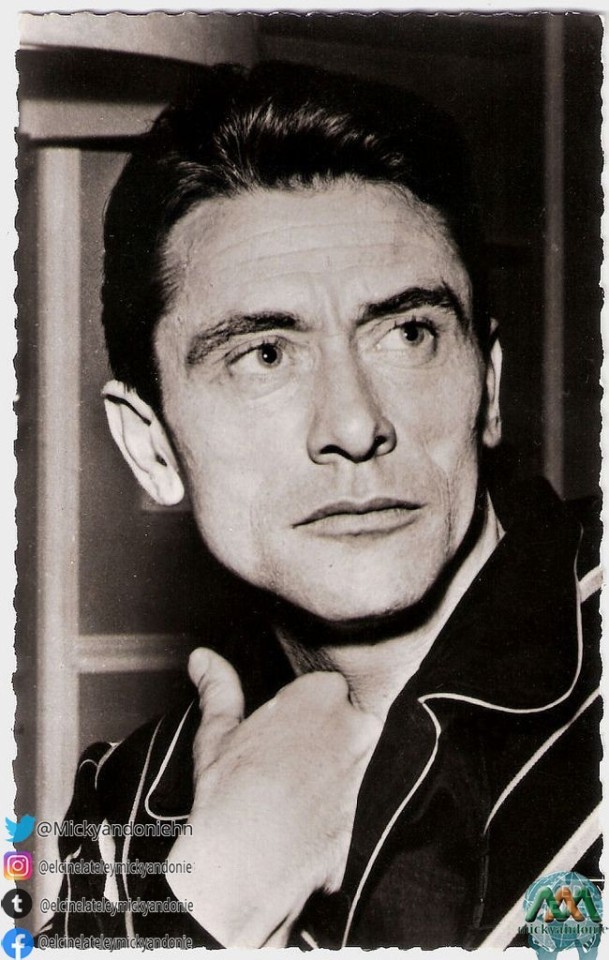
Robert Lamoureux.
Filmografía
Teatro
Autor
1957 : La Brune que voilà
1959 : Un rossignol chantait
1967 : Frédéric
1970 : Échec et meurtre
1971 : La sopera
1974 : Le Charlatan
1980 : Diable d'homme
1986 : Le Tombeur
1987 : La Taupe
1989 : Adélaïde 90
1993 : L'Amour foot
1996 : Si je peux me permettre.
Actor
1951 : Ombre chère, de Jacques Deval, escenografía del autor, Théâtre Édouard VII
1954 : La Manière forte, de Jacques Deval, escenografía del autor, Théâtre de l'Athénée
1958 : La Brune que voilà, de Robert Lamoureux, escenografía del autor, Théâtre des Variétés
1959 : La Brune que voilà, de Robert Lamoureux, escenografía del autor, Théâtre des Célestins
1959 : Un rossignol chantait, de Robert Lamoureux, escenografía de Jean Marais, Théâtre des Variétés
1962 : Turlututu, de Marcel Achard, escenografía de Jean Meyer, Théâtre Antoine
1964 : Jo, de Claude Magnier, escenografía de Jean-Pierre Grenier, Théâtre des Nouveautés
1967 : Faisons un rêve, de Sacha Guitry, escenografía de Robert Lamoureux, Théâtre des Célestins
1967 : Frédéric, de Robert Lamoureux, escenografía de Pierre Mondy, Théâtre Edouard VII y giras Herbert-Karsenty en 1968-1969
1968 : Désiré, de Sacha Guitry, escenografía de Pierre Dux, Théâtre du Gymnase Marie-Bell y Théâtre du Palais-Royal
1969 : Domino, de Marcel Achard, escenografía de Pierre Mondy, Théâtre des Variétés
1969 : Frédéric, de Robert Lamoureux, escenografía de Pierre Mondy, Espace Cardin
1969 : Échec et meurtre, de Robert Lamoureux, escenografía de Jean Piat, Espace Cardin y giras Herbert-Karsenty en 1970-1971
1971 : La sopera, de Robert Lamoureux, escenografía de Robert Lamoureux y Francis Joffo, Théâtre Édouard VII y giras Herbert-Karsenty en 1972-1973
1974 : Le Charlatan, de Robert Lamoureux, escenografía de Francis Joffo, Théâtre des Bouffes-Parisiens
1976 : Knock ou le Triomphe de la médecine, de Jules Romains, escenografía de Jean Meyer, Théâtre des Célestins y giras Herbert-Karsenty en 1975-1976
1980 : Le Charlatan, de Robert Lamoureux, escenografía de Francis Joffo, Théâtre des Célestins y giras Herbert-Karsenty en 1979-1980
1980 : Diable d'homme, de Robert Lamoureux, escenografía de Daniel Ceccaldi, Théâtre des Bouffes-Parisiens.
1984 : Le Dindon, de Georges Feydeau, escenografía de Jean Meyer, Théâtre du Palais-Royal
1985 : La Prise de Berg-Op-Zoom, de Sacha Guitry, escenografía de Jean Meyer, Théâtre des Célestins
1986 : La Prise de Berg-Op-Zoom, de Sacha Guitry, escenografía de Jean Meyer, Théâtre des Nouveautés y Théâtre de la Michodière
1986 : Le Tombeur, de Robert Lamoureux, escenografía de Jean-Luc Moreau, Théâtre des Variétés
1987 : La Taupe, de Robert Lamoureux, escenografía de Francis Joffo, Théâtre Antoine y giras Herbert-Karsenty en 1986-1987
1989 : Adélaïde 90, de Robert Lamoureux, escenografía de Francis Joffo, Théâtre Antoine y giras Herbert-Karsenty en 1989-1990
1992 : L'Amour foot, de Robert Lamoureux, escenografía de Francis Joffo, Théâtre Antoine y giras Herbert-Karsenty en 1991-1992
1996 : Si je peux me permettre, de Robert Lamoureux, escenografía de Francis Joffo, Théâtre des Nouveautés
1999 : Si je peux me permettre, de Robert Lamoureux, escenografía de Francis Joffo, Théâtre Saint-Georges
2002 : Le Charlatan, de Robert Lamoureux, escenografía de Francis Joffo, Théâtre du Palais-Royal.
Cine
Director
1960 : Ravissante
1960 : La Brune que voilà
1973 : Mais où est donc passée la septième compagnie ?
1974 : Impossible... pas français
1975 : On a retrouvé la septième compagnie
1975 : Opération Lady Marlène
1977 : La Septième Compagnie au clair de lune.
Actor
1951 : Le Roi des camelots´, de André Berthomieu
1951 : Le Don d'Adèle, de Émile Couzinet
1951 : Au fil des ondes, de Pierre Gautherin
1951 : Chacun son tour, de André Berthomieu
1952 : Allô... je t'aime d'André Berthomieu : Pierre Palette
1953 : Lettre ouverte, de Alex Joffé
1953 : L'incantevole nemica, de Claudio Gora
1953 : Virgile, de Carlo Rim
1954 : Escalier de service, de Carlo Rim
1954 : Papa, maman, la bonne et moi, de Jean-Paul Le Chanois
1955 : Village magique, de Jean-Paul Le Chanois
1955 : Si Paris nous était conté, de Sacha Guitry
1956 : Papa, maman, ma femme et moi, de Jean-Paul Le Chanois
1956 : Rencontre à Paris, de Georges Lampin
1956 : Une fée… pas comme les autres, de Jean Tourane
1957 : L'amour est en jeu, de Marc Allégret
1957 : Les Aventures d'Arsène Lupin.
1958 : La Vie à deux, de Clément Duhour
1959 : Signé Arsène Lupin, de Yves Robert
1960 : La Française et l'Amour: La Femme seule, de Jean-Paul Le Chanois
1960 : Ravissante, de Robert Lamoureux
1960 : La Brune que voilà, de Robert Lamoureux
1973 : Mais où est donc passée la septième compagnie ?, de Robert Lamoureux
1974 : Impossible... pas français, de Robert Lamoureux
1975 : On a retrouvé la septième compagnie, de Robert Lamoureux
1975 : Opération Lady Marlène, de Robert Lamoureux
1977 : L'Apprenti salaud, de Michel Deville
1991 : Le Jour des rois, de Marie-Claude Treilhou.
Televisión
1970-1971 : Au théâtre ce soir
1975 : Ne coupez pas mes arbres
1981 : Le charlatan
1983 : Emmenez-moi au théâtre: La soupière
1984 : Diable d'homme!
1986 : Maguy
1986 : Le dindon
1989 : La taupe
1992 y 1994 : La guerre des privés
1994 : L'amour foot.
Poemas, monólogos, canciones
- CD « Papa, maman, la bonne et moi : Robert lamoureux », Believe / Rym -Musique, 2000, 19 títulos:
- De quoi donc tu causes ? (canción)
- Papa, Maman, la bonne et moi (canción; letra y música de Robert Lamoureux)
- La plupart du temps
- Souris à la vie (canción)
- Le dernier de la classe
- Viens à la maison (canción)
- Qu'est-ce que tu crois ? (canción)
- Éloge de la fatigue
- La chasse au canard
- Banlieue (canción)
- Liberté Java (canción)
- Histoire de roses (canción; letra y música de Robert Lamoureux) — otros intérpretes: Patachou (1950), Renée Lamy, Lucette Raillat
- Éloge de mon prénom
- Lettre à Dédé
- J'aurais aimé savoir chanter (canción)
- Saint-Mandé
- Voyage en Italie
- Enfantillage
- Passé simple
- Álbum « J'ai un moral à tout casser »:
- J'ai un moral à tout casser
- Viens pas trop tard
- La voiture d'occasion
- Le printemps
- Métro (canción; letra de Robert Lamoureux — música de Henri Bourtayre) — otro intérprete : Yves Montand
- Fanfan la Tulipe
- Foire du Trône (canción; letra de Robert - Lamoureux — música de René Delauney)
- Le déménagement
- Laissez-les s'envoler — Geneviève Guitry
- Cinq à sept — Harry Séguéla
- Le trac
- Álbum « […] » :
- Hold-up
- Retour de vacances
- Le tour de France / La chasse à cour.
Premios
1950 : Premio de la Académie Charles-Cros por Papa, maman, la bonne et moi
2000 : Oficial de la Legión de Honor
2009 : Medalla Grand Vermeil, de la Ciudad de París.
Créditos: Tomado de Wikipedia
https://es.wikipedia.org/wiki/Robert_Lamoureux
#HONDURASQUEDATEENCASA
#ELCINELATELEYMICKYANDONIE
0 notes